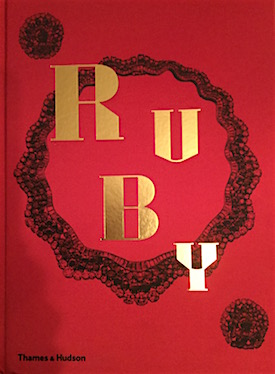If you’re looking for a last-minute gift for the jewelry lovers in your life, you can’t go wrong on the holidays with an ode to red, that particular shade that sets the heart of every jewelry fanatic thumping.
(Thames & Hudson, December 19, 2017)
This big, red tome delivers what it promises: a celebration of – and everything you ever wanted to know about – the ruby: 320 oversize pages dedicated to the world’s most famous red gemstone.
RUBY begins and ends with several full-bleed images of rubies as viewed through a loupe: giant, magnified abstractions of raspberry-colored corundum, with just enough inclusion and refraction for you to know exactly what you’re looking at.
Interestingly, after her drum roll of an introduction, author Joanna Hardy opens with a chapter devoted not to ruby but spinel. This book is about the legend and history of ruby, after all, and many of history’s most famous rubies were actually spinels.
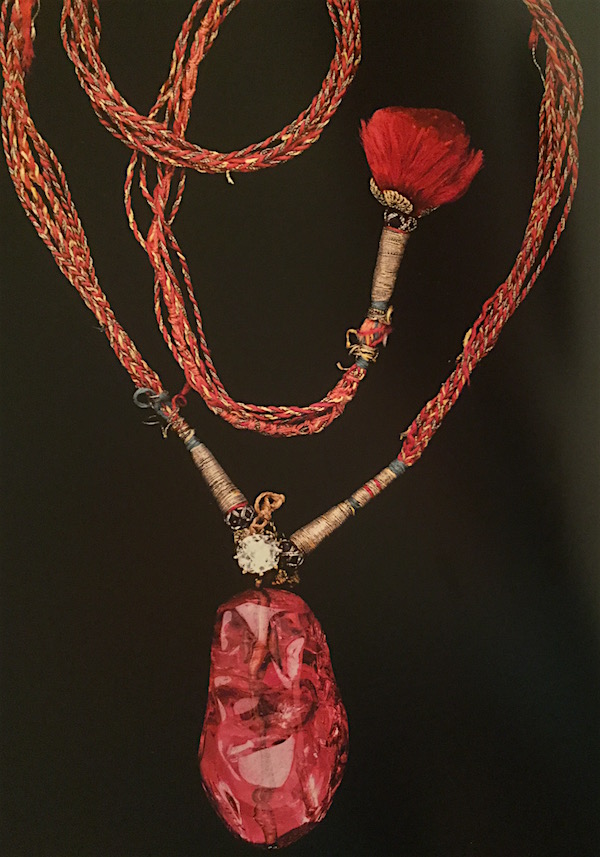
This lovely piece gets a big spread in the book, not because it was confused for ruby, but as evidence that spinel played a central role in the jewels of many ancient cultures, including the Mughal empire. That one (above) is set with diamonds and engraved with the names of several Mughal emperors.
Hardy writes that rubies “owe their initial fame” to the spinel: “If it were not for this beautiful gem, rubies may not have enjoyed their later worldwide recognition…. This historical, predominantly Western confusion between spinel and ruby is understandable given the great similarities in their appearance. It was not until the late eighteenth century, when gemstones were classified mineralogically with the help of chemistry, that spinel was recognized as a mineral distinct from ruby.”
What transpired was a public relations coup for rubies (corundum) which, prior to that, were often referred to as “carbuncle,” and a PR nightmare for all the spinels which had, for centuries, been called rubies. Hardy seems to be saying a ruby by any other name – including “spinel” – would smell as sweet.
Page after page follows of famous crowns designed around big, fat, juicy spinels, long thought to be rubies. They include the crown Catherine the Great wore, the one Queen Elizabeth wears for the Opening of Parliament, and the imperial crown of the Austrian emperors, designed in 1602 – which I was ogling in Vienna last year, thinking its center stone was a ruby. (I couldn’t read the captions.)
RUBY then takes us through several ancient cultures and the role ruby played in its jewelry history – cabochon ruby-studded Indian turban ornaments, Persian bowls, Balinese brooches. We dive into the jewels of Elizabethan England, various royals, the Gilded Age. It’s a chapter devoted to Indian jewelry where this image stopped me in my tracks.
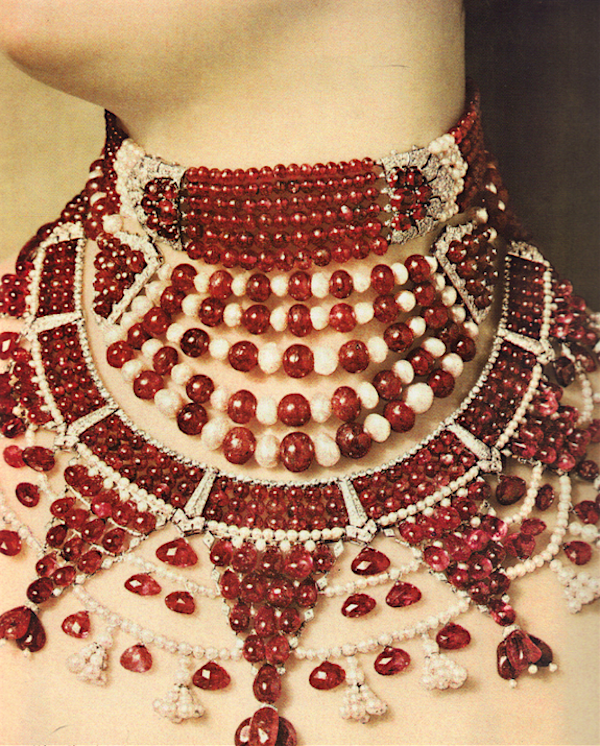
RUBY opens with this quote from Audrey Hepburn: “There is a shade of red for every woman.” Several celebrities cast their own on this famous gem, including Elizabeth Tailor and the Duchess of Windsor.
Maybe it’s because I just saw Marlene Dietrich: Dressed for the Image at the National Portrait Gallery, but it was Marlene and her rubies that caught my eye – one Van Cleef bracelet in particular that I’ve featured here before. It was obviously a favorite of hers too (and that woman had an amazing jewelry collection), judging by how often she wears it in photographs and films. You can spot it in Hitchcock’s Stage Fright.
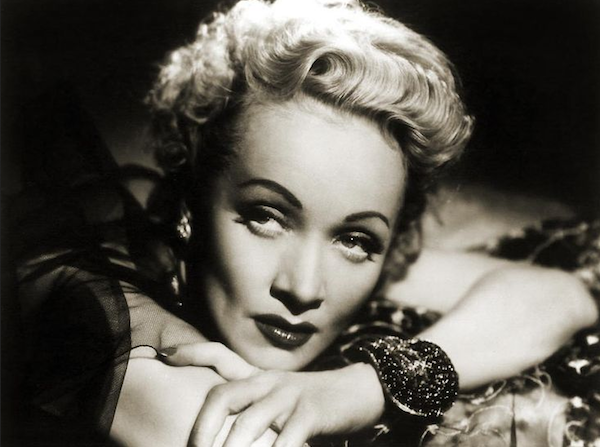
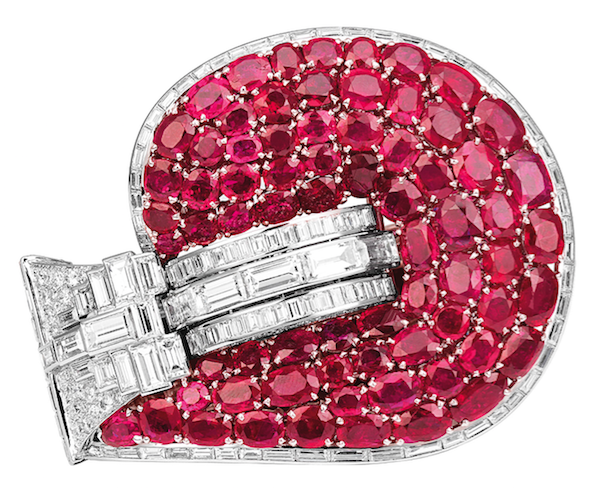
This ruby and diamond Jarretiére cuff bracelet was made by Van Cleef & Arpels just before the war, between 1937 and 1939. One year later, it would not have been possible to produce because the precious material that went into it – including 73 delicious rubies and a hunk of platinum – was no longer available. The bracelet hints at Deco but looks more like the jewelry we associate with the 1950s. Dietrich was way ahead of her time and Van Cleef was on their best game by this time.
Other collectors and style setters appear in the book’s pages, along with ruby jewels that have graced this blog over the years, including Millicent Rogers’ ruby heart and the René Boivin starfish brooch designed by Juliette Moutard. It became a signature piece for Moutard. Here’s one I got my hands on at Christie’s in 2014.
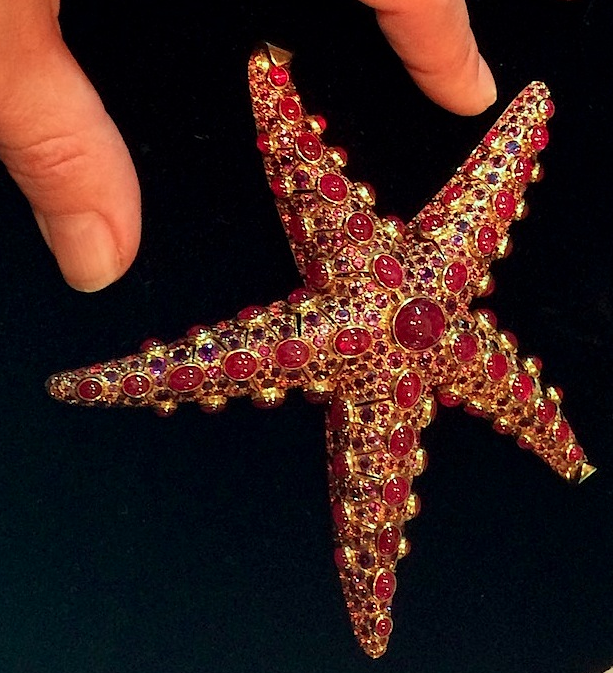
Those ruby jewels Salvador Dalí produced with Carlos Alemany got a two-page spread: the Ruby Lips brooch with pearl teeth, the Royal Heart with a beating, motor-driven ruby-set heart at its center, and the Honeycomb Heart.
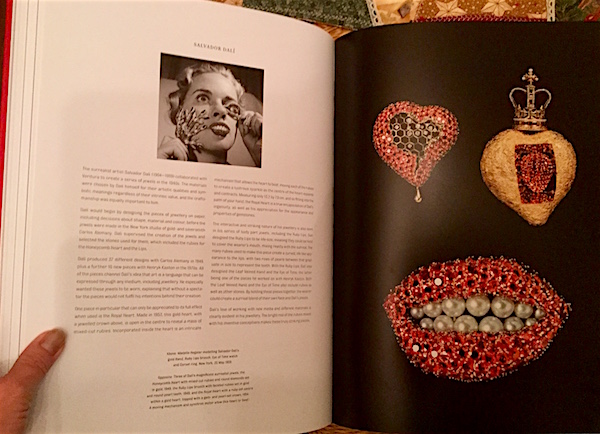
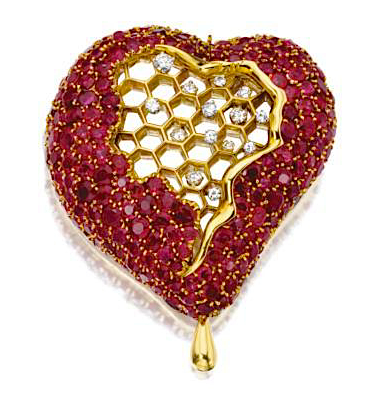
To learn more about Dali’s mid-century turn as a jewelry designer, check out this post I wrote a few years back.
While most of the book is devoted to the ruby throughout history, towards the end RUBY shines the spotlight on contemporary jewels, including some beautiful work by Hemmerle, BHAGAT, Bina Goenka, Wallace Chan, and these little beauties by Michelle Ong and Hemmerle.
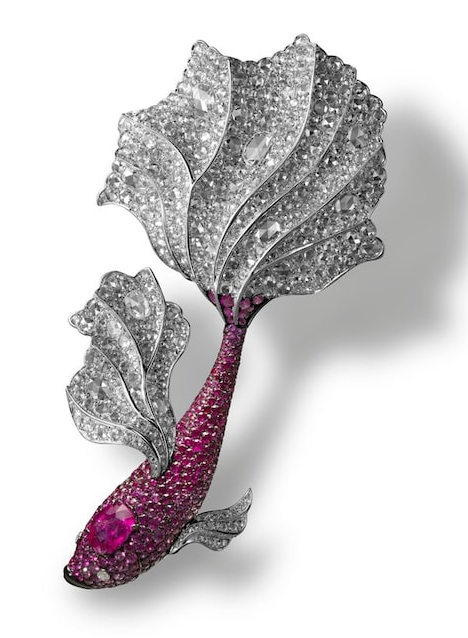
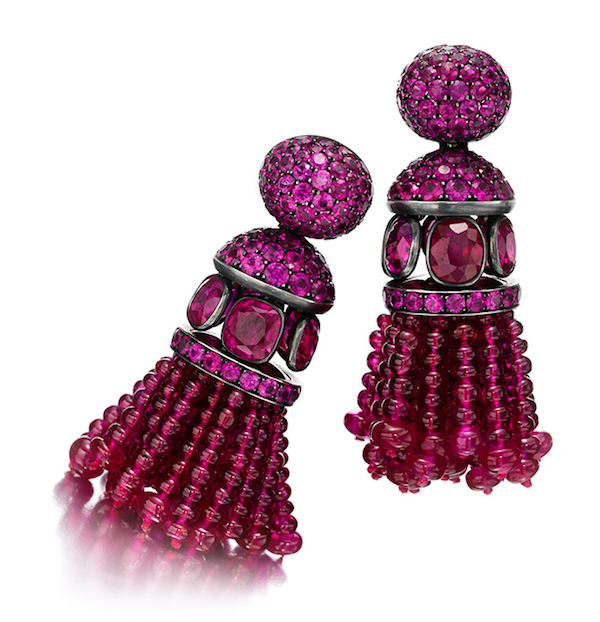
A final chapter takes you inside the workshops of some famous jewelry houses. Especially fascinating for jewelry nerds is the illustrated description of the process behind Van Cleef & Arpels’ Mystery Setting, from initial sketch to finished ruby-and-diamond phoenix brooch.
You can find RUBY: The King of Gems here.
RUBY closes with a bit on the mines in Thailand and Mozambique where rubies are mined today. If you’re looking for a deeper dive into that side of things, check out my review of Secrets of the Gem Trade.
This post contains affiliate links.
Related product
If you’re looking for other ideas for gift books, here are some I enjoyed this year and will be reviewing in the coming weeks:

